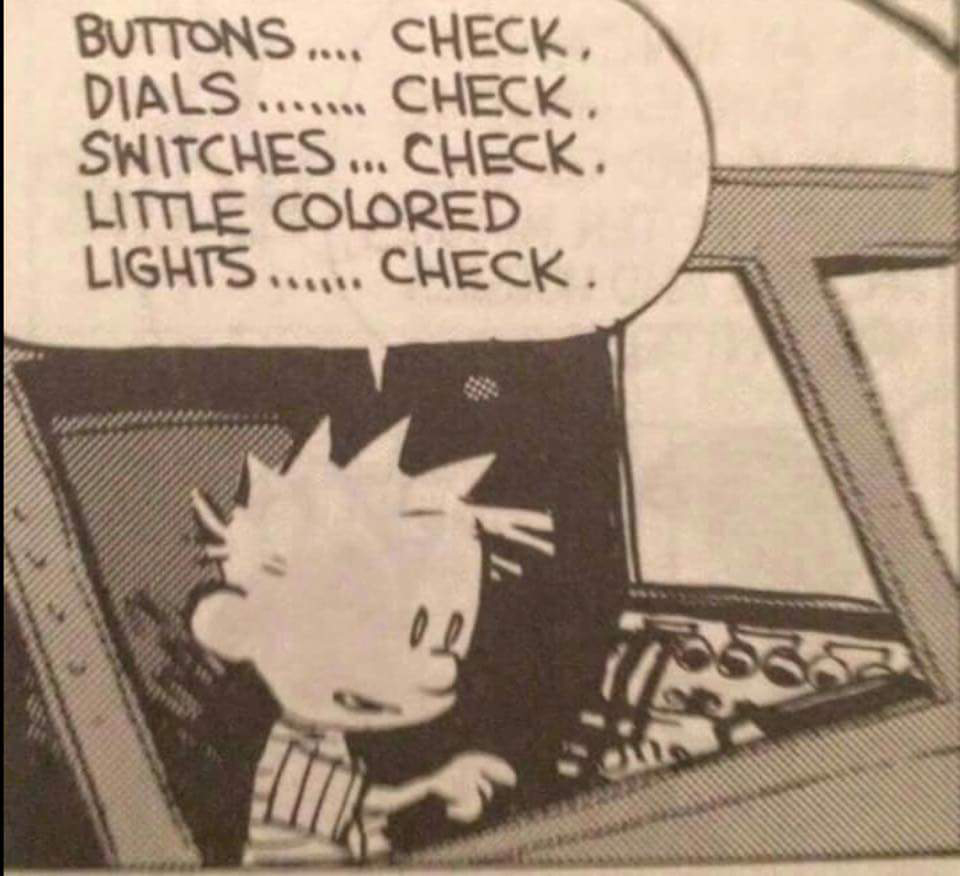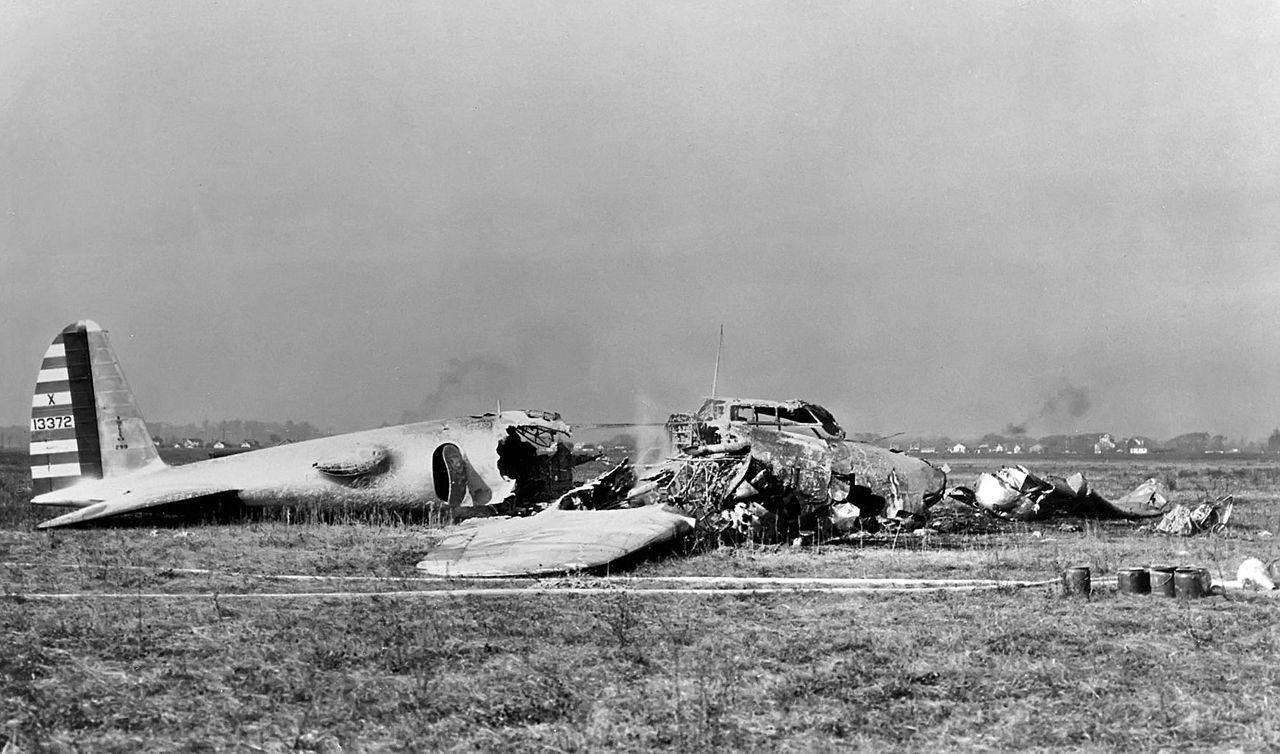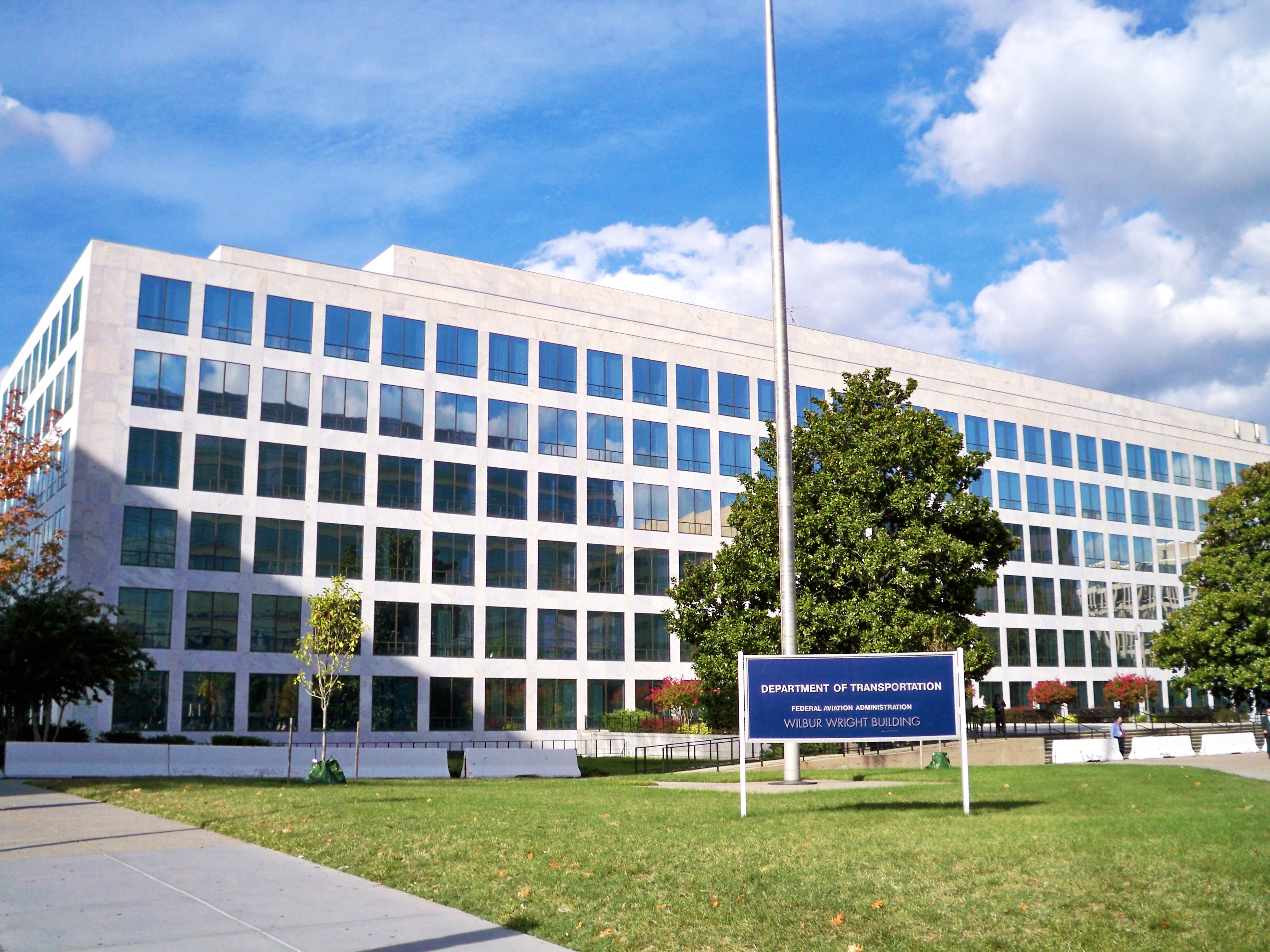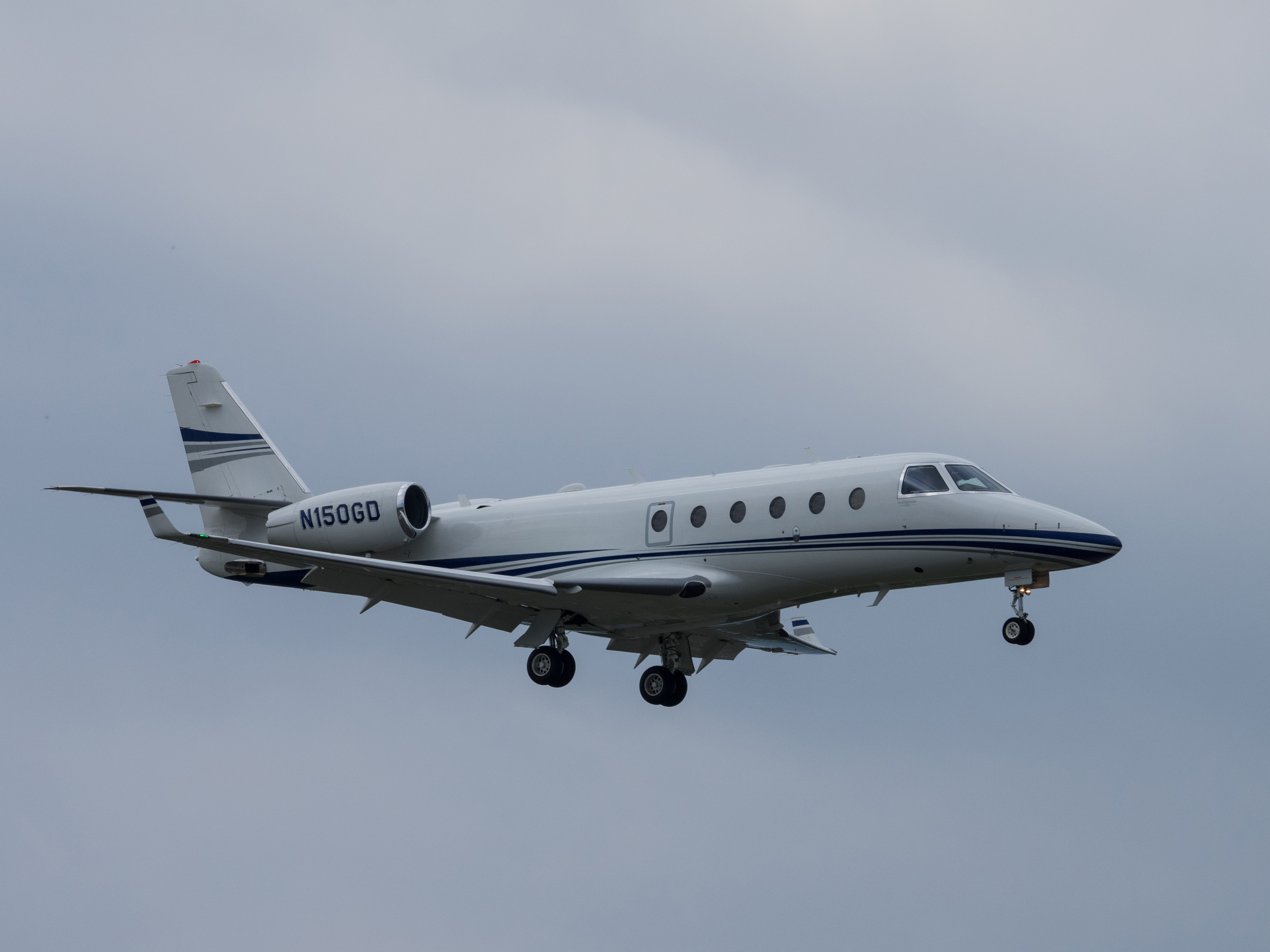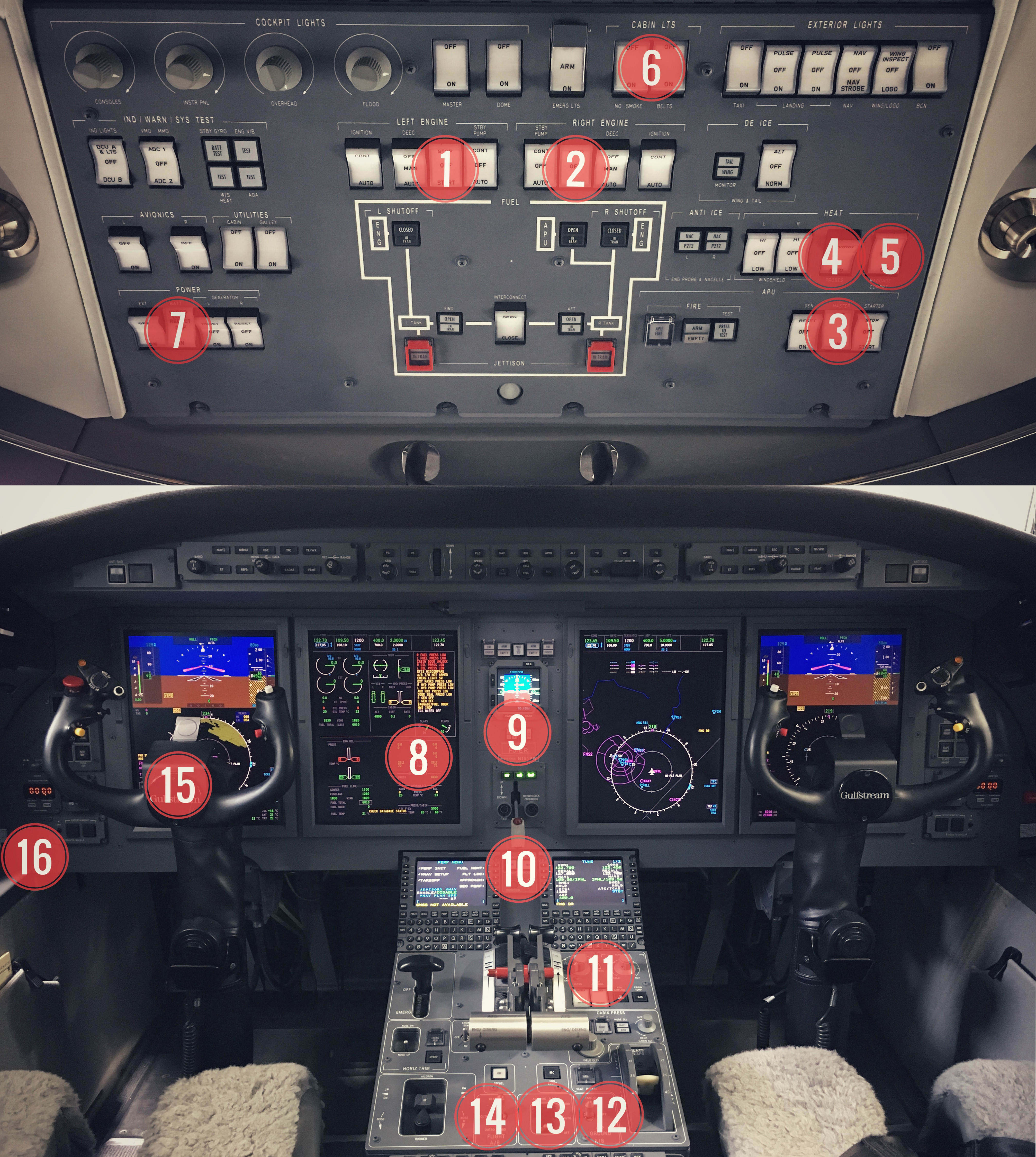I do a fair amount of public speaking about safety topics, complacency, and flight discipline. The subject of checklists comes up frequently and when I offer my opinions, I can tell there is a sharp divide in the audience about what I have to say.
— James Albright

Updated:
2018-03-08
I think roughly half of these audiences are on my side: we need to use checklists as they were designed, line by line: "Challenge-Do-Verify." The other half nod politely, usually not saying anything. Every now and then somebody offers a counter point. But roughly half don't agree that checklists need to be done so formally and advocate what some call "the flow," but is more properly called the "Do-Verify" method.
So let's look at checklists with a fresh set of eyes, from the medical community. Then let's look at the early days of checklists in aviation, the official view (from the FAA), the most common objections (and counter-objections), and a real life example showing the pros and cons of using checklists using Challenge-Do-Verify.
Okay, fine for pilots in crews of at least two. What about those in single pilot cockpits? Yes, you need to use checklists. And yes, Challenge-Do-Verify is the way to go: Single Pilot Techniques.
Finally, not only do I speak to various aviation groups about this and other topics, I also write for a few magazines, most notably Business & Commercial Aviation Magazine. After this article appeared I got a reader comment that was so eloquent I just have to quote it, shown below.
2 — The early days of checklists

1
A medical experiment
There are some parallels with the medical profession and aviation. We have many complex tasks that, taken as a whole, seem too varied and difficult to break down into checklists. But there are individual "sub-procedures" that do lend themselves to the idea we can check them to make sure they are done.
But if you suggest a checklist for these sub-procedures, you are likely to hear they are so simple that using a checklist would be a waste of time. Why do I need a checklist to start the APU? It is seven steps long, I have them memorized, and I never forget any of the steps. Except when I do.
Dr. Gawande studied a simple five step procedure that has been in use for years and years. Nobody gets them wrong. Except when they do. A checklist for this simple procedure has saved lives.
In 2001, though, a critical care specialist at Johns Hopkins Hospital named Peter Pronovost decided to give a doctor checklist a try. He didn't attempt to make the checklist encompass everything ICU teams might need to do in a day. He designed it to tackle just one of their hundreds of potential tasks, the one that nearly killed Anthony Defilippo: central line infections.
On a sheet of plain paper, he plotted out the steps to take in order to avoid infections when putting in a central line. Doctors are supposed to
- wash their hands with soap,
- clean the patient's skin with chlorhexidine antiseptic,
- put sterile drapes over the entire patient,
- wear a mask, hat, sterile gown, and gloves, and
- put a sterile dressing over the insertion site once the line is in.
Check, check, check, check, check. These steps are no-brainers; they have been known and taught for years. So it seemed silly to make a checklist for something so obvious. Still, Pronovost asked the nurses in his ICU to observe the doctors for a month as they put lines into patients and record how often they carried out each step. In more than a third of patients, they skipped at least one.
The next month, he and his team persuaded the Johns Hopkins Hospital administration to authorize nurses to stop doctors if they saw them skipping a step on the checklist; nurses were also to ask the doctors each day whether any lines ought to be removed, so as not to leave them in longer than necessary. This was revolutionary. Nurses have always had their ways of nudging a doctor into doing the right thing, ranging from the gentle reminder ("Um, did you forget to put on your mask, doctor?") to more forceful methods (I've had a nurse bodycheck me when she thought I hadn't put enough drapes on a patient). But many nurses aren't sure whether this is their place or whether a given measure is worth a confrontation. (Does it really matter whether a patient's legs are draped for a line going into the chest?) The new rule made it clear: if doctors didn't follow every step, the nurses would have backup from the administration to intervene.
For a year afterward, Pronovost and his colleagues monitored what happened. The results were so dramatic that they weren't sure whether to believe them: the ten-day line-infection rate went from 11 percent to zero. So they followed patients for fifteen more months. Only two line infections occurred during the entire period. They calculated that, in this one hospital, the checklist had prevented forty-three infections and eight deaths and saved two million dollars in costs.
Source: Gawande, pp. 37-39
Anecdotal you say? In 2008, Dr. Gawande worked with the World Health Organization (WHO) to bring a fuller checklist to a broader test group, worldwide. The results have changed the practice of medicine.
The final WHO safe surgery checklist spelled out nineteen checks in all. Before anesthesia, there are seven checks. The team members confirm that the patient (or the patient's proxy) has personally verified his or her identity and also given consent for the procedure. They make sure the surgical site is marked and that the pulse oximeter — which monitors oxygen levels — is on the patient and working. They check the patient's medication allergies. They review the risk of airway problems — the most dangerous aspect of general anesthesia — and that appropriate equipment and assistance for them are available. And lastly, if there is a possibility of losing more than a half a liter of blood (or the equivalent for a child), they verify that necessary intravenous lines, blood, and fluids are ready.
Source: Gawande, pp. 140-157
There are seven more checks after anesthesia, but before incision. And at the end of the operation, there are five final checks.
- We collected data on the surgical care in up to four operating rooms at each facility for about three months before the checklist went into effect. It was a kind of biopsy of the care received by patients across the range of hospitals in the world. And the results were sobering.
- Of the close to four thousand adult surgical patients we followed, more than four hundred developed major complications resulting from surgery: Fifty-six of them died. About half the complications involved infections. Another quarter involved technical failures that required a return trip to the operating room to stop bleeding or repair a problem. The overall complication rates ranged from 6 percent to 21 percent. It's important to note that the operating rooms we were studying tended to handle the hospital's more complex procedures.
- Then, starting in spring 2008, the pilot hospitals began implementing our two-minute, nineteen-step surgery checklist.
- We began to hear some encouraging stories, however. In London, during a knee replacement by an orthopedic surgeon who was one of our toughest critics, the checklist brought the team to recognize, before incision and the point of no return, that the knee prosthesis on hand was the wrong size for the patient-and that the right size was not available in the hospital. The surgeon became an instant checklist proponent.
- In India, we learned, the checklist led the surgery department to recognize a fundamental flaw in its system of care. Usual procedure was to infuse the presurgery antibiotic into patients in the preoperative waiting area before wheeling them in. But the checklist brought the clinicians to realize that frequent delays in the operating schedule meant the antibiotic had usually worn off hours before incision.
- In October 2008, the results came in.
- He laid a sheaf of statistical printouts in front of me and walked me through the tables. The final results showed that the rate of major complications for surgical patients in all eight hospitals fell by 36 percent after introduction of the checklist. Deaths fell 47 percent. The results had far outstripped what we'd dared to hope for, and all were statistically highly significant. Infections fell by almost half. The number of patients having to return to the operating room after their original operations because of bleeding or other technical problems fell by one-fourth. Overall, in this group of nearly 4,000 patients, 435 would have been expected to develop serious complications based on our earlier observation data. But instead just 277 did. Using the checklist had spared more than 150 people from harm-and 27 of them from death.
Source: Gawande, pp. 140-157
Despite this great success, a majority of the doctors did not support making checklists mandatory in the operating room. Those doctors who thought checklists were not needed were then asked if they found themselves on the operating table if the attending surgeon should use a checklist. A full 93 percent said yes.
2
The early days of checklists
In 1934, the U.S. Army Air Corps asked industry to come up with a replacement for the twin-engine Martin B-10 bomber. Douglas and Martin came forward with bombers that were a marginal improvement, Boeing's Model 299 represented a revolutionary leap forward in bombers. But this crash of the prototype caused the program's cancellation, reasoning the new bomber was simply too complicated to fly. But the Army Air Corps wanted the airplane and ordered 13 of the bombers with several changes and a checklist for crews to follow. The aircraft became a work horse of the air war over Europe and over 12,000 were built. The aircraft, as it turned out, wasn't too complicated to fly. It just needed a checklist.
The creation of the checklist was delayed by an unrealistic reliance on the memory of pilots. This dated all the way back to 1903, with the Wright brothers’ intimate knowledge of airplanes.
By 1918, with vastly expanded pilot training in the United States, a special handbook was created by Curtis for the JN-4 “Jenny.” One section was titled “Hints on Flying” and provided a list of 18 items, each with considerable detail. Five items were devoted to actions to take before takeoff, nine covered in-flight procedures and safety precautions, two advised on landings, and two discussed ways to avoid stalls and spins.
As was the case with all of these checklist predecessors, pilots were expected to know the manual by rote. Sometimes this led to hubris, which led to accidents.
The nearest relative to a post-1935 checklist is found in “Hints on the Bristol Fighter,” dated March 30, 1918, and written by the officer commanding No. 39 Squadron. The section headings are similar to modern checklist, including specific sections designed to ensure pilots see that the pressure is holding, the ignition is fully advanced, the temperature is at least 65 degrees and not over 85 degrees, the oil pressure is OK, the blinds are open, and the tail lever is forward.
The Model 299 made its first flight on July 28, 1935, flown by Boeing’s chief test pilot Leslie R. Tower. Dubbed the “Flying Fortress” by Seattle reporter Richard L. Williams, the Model 299 was the prototype for 12,730 B-17s which followed. Then on Oct. 30, 1935, with the suddenness that characterizes experimental test flights, Boeing’s great gamble seemed to fail when the beautiful silver Model 299 crashed on takeoff from Wright Field. The tragic event seemed certain to lead to the cancellation of the program and an immediate change in Army Air Corps planning.
At about 9:30 a.m. on that October day, the Model 299 was manned by a very experienced crew, including Maj. Ployer P. Hill, Wright Field’s Flying Branch chief, and his copilot, 1st Lt. Donald L. Putt. Also on board were John B. Cutting, a flight-test observer; Mark H. Koogler, also from the Flying Branch; and Tower.
Observers described the initial run of the Model 299’s takeoff as normal, even though it broke ground at about 74 mph in a “tail low” attitude. As its speed increased, the bomber’s nose went up much higher than normal. Two men, 1st Lt. Robert K. Giovannoli and 1st Lt. Leonard F. Harman, sensed it was in trouble and ran forward as the airplane reached an altitude of about 300 feet.
The Model 299 stalled, turned 180 degrees, and fell back onto a field. It landed on its left wing, cushioning the impact, which probably saved the lives of several crew. Lying flat on the field, the bomber burst into flames. Amazingly, four crew members were able to crawl from the blazing wreckage.
Source: Boyne
Hill Air Force Base, Utah, was named after Major Hill, who died following this crash.
A board of officers convened at Wright Field to investigate the crash. The presiding officer was Lt. Col. Frank D. Lackland, for whom Lackland AFB, Tex., was later named. The board determined the accident was “not caused by”: structural failure; malfunction of flight controls, engines, or propellers; the automatic pilot; or any faulty structural or aerodynamic design. Instead, it ascribed the direct cause to the elevator control being locked.
The tail section of the aircraft was virtually all that survived the fire, but it contained the cause of the accident: an internal control lock that controlled both the elevator and rudder.
The board stated that—due to the size of the airplane and the inherent design of the control system—it was improbable that any pilot, taking off under the same conditions, would discover the locked controls until it was too late to prevent a crash. Ordinarily, pilots make checks of their movement as a precaution, but apparently this did not occur.
To avoid another accident, Air Corps personnel developed checklists the crew would follow for takeoff, flight, before landing, and after landing. The idea was so simple, and so effective, that the checklist was to become the future norm for aircraft operations. The basic concept had already been around for decades, and was in scattered use in aviation worldwide, but it took the Model 299 crash to institutionalize its use.
Source: Boyne
3
The official (FAA) view
Yes, the following only applies to commercial operators, including 14 CFR 91K. But it should be considered a "best practice" among all non-commercial operators.
3-3401 A. Definition. A checklist is a formal list used to identify, schedule, compare, or verify a group of elements or actions. A checklist is used as a visual or oral aid that enables the user to overcome the limitations of short-term human memory.
3-3402 B. Criticality of Checklist Items. Checklist items can be ranked in criticality according to the potential effect of the crewmember failing to perform the action. Critical items are those items which, if not correctly performed, have a direct, adverse effect on safety. Noncritical items are “housekeeping” items or systems management items, which for operating practices must be routinely accomplished during a specific phase of flight, but if omitted would have a minimal effect on safety.
3-3403 METHODS OF CHECKLIST DESIGN. Operators may choose from at least two accepted methods of checklist design: the “challenge-do-verify” (CDV) method and the “do-verify” (DV) method. Available evidence suggests that safety is enhanced when the operator adopts and applies a consistent checklist design policy. POIs should use the following informative guidance when reviewing the design of an operator’s aircraft checklists.
A. “Challenge-Do-Verify.” The CDV method consists of a crewmember making a challenge before an action is initiated, taking the action, and then verifying that the action item has been accomplished. The CDV method is most effective when one crewmember issues the challenge and the second crewmember takes the action and responds to the first crewmember, verifying that the action was taken. This method requires that the checklist be accomplished methodically, one item at a time, in an unvarying sequence. The primary advantage of the CDV method is the deliberate and systematic manner in which each action item must be accomplished. The CDV method keeps all crewmembers involved (in the loop), provides for concurrence from a second crewmember before an action is taken, and provides positive confirmation that the action was accomplished. The disadvantages of the CDV method are that it is rigid and inflexible and that crewmembers cannot accomplish different tasks at the same time.
B. “Do Verify.” The DV method (or “clean-up” method) consists of the checklist being accomplished in a variable sequence without a preliminary challenge. After all of the action items on the checklist have been completed, the checklist is then read again while each item is verified. The DV method allows the flightcrew to use flow patterns from memory to accomplish a series of actions quickly and efficiently. Each individual crewmember can work independently, which helps balance the workload between crewmembers. The DV method has a higher inherent risk of an item on the checklist being missed than does the CDV method.
C. Selection of Design Method. Both the CDV and the DV methods of checklist design are currently being successfully used for normal checklists. Traditionally, operators have preferred the DV method for normal checklists and the CDV method for non-normal and emergency checklists. Operators have, however, successfully used the CDV method for all checklists. POIs may approve either method for normal checklists. In most circumstances, non-normal and emergency checklists are more effective when the CDV method is used. The correct accomplishment of the actions and procedures incorporated in the non-normal and emergency checklist categories is critical and warrants a methodical approach. Since these checklists are seldom used, however, crewmembers are usually not as familiar with the procedures incorporated into these checklists as they are with the procedures in normal checklists. In addition, many non-normal and emergency checklists do not lend themselves to developing flow patterns that crewmembers can readily recall. The CDV method also enforces crew coordination, cross-checking, and verification, all of which aid the crewmember in overcoming the adverse effects of stress. POIs should not approve or accept the DV method for non-normal or emergency procedures unless the operator can provide substantial evidence that the method is effective for this application.
3-3404 B. 7) In the taxi and pretakeoff phases, aircraft configuration (such as flaps, trim, and speedbrakes) and flight guidance items (such as heading, flight director, altitude select panel settings, and airspeed bugs) have proven to be critical. All flightcrew members should confirm these items, and at least two crewmembers should respond to applicable checklist items.
8) On approach, flight guidance checklist items have proven to be critical items. At least two crewmembers should confirm and respond to these items. A response should be required from each pilot when the same setting is required on two separate devices (such as computers, flight instruments, or altimeters).
9) All checklist items that are critical in the before-landing phase vary with the type of airplane involved. In the operation of small airplanes, the landing gear has proven to be a critical checklist item, and both pilots should confirm and respond to this item. Although the landing gear and flaps are critical items for large, transport category airplanes, the multiple warning devices and systems that are associated with these systems make the need for a response and confirmation by both pilots less critical.
10) All checklists, except the after-takeoff and after-landing checklists, should be accomplished by one crewmember reading the checklist items and a second crewmember confirming and responding to each item. POIs shall ensure that critical items on the before-takeoff and before-landing checklists are confirmed and responded to by at least two crewmembers.
Source: FAA Order 8900.1, Volume 3, Chapter 32
It certainly makes sense that the after takeoff and after landing checklists are exceptions, you are very busy and your eyes need to be outside. But every other checklist needs to be accomplished using the challenge-do-verify method. That should end all arguments from the "I can flow any checklist" crowd. It certainly illustrates that the "silent checklist" should be used.
4
Objections (and counter-objections)

N121JM Wreckage,
NTSB Accident Docket
The most common objection to rigidly following a challenge-do-verify checklist is that it slows things down for procedures that are (and should be) ingrained because we do them so often. My answer to that is N121JM. But let's set that aside for now. There are other objections and counter points to those objections.
- Challenge-do-response checklists take too long to complete
- There are enough safeguards in place to catch missed checklist items
- A flow followed by the checklist is more accurate because you do everything twice
- The flow — As soon as the engines were stabilized, the left seat pilot raced through the flow. It seemed to be a point of pride among our pilots to see how quickly they could do it. One of our pilots could finish the entire flow in the time it took me to pick up the checklist.
- The checklist — The process, theoretically, is as follows:
- The right seat pilot reads an item (the challenge), i.e., "Essential DC Bus"
- The left seat pilot looks at the item and responds to the challenge, i.e., "Auto, left main on"
- The process is repeated until complete.
- The problem is that every now and then the left seater missed an item in the flow, didn't catch it during the challenge/response, and the right seater was either too busy reading to verify the item or also looked at the item and saw what he or she expected to see. We usually caught these errors by the time we got ready for takeoff, especially if the item was caught by the airplane's Crew Alerting System (CAS). But not every missed item generates a CAS message.
- Highly experienced crews don't miss checklist items
- 6/12/1991 Korean Air 852 — The pilots didn't use the before landing checklist and pulled the circuit breaker to a pesky warning horn, landing gear up and destroying a Boeing 727.
- 05/02/2000 Cessna 501 — The pilot failed to follow the before landing checklist and landed with the gear retracted.
- 10/26/2005 Learjet 25D — The pilot failed to complete the before landing checklist following a distraction and landed with the gear retracted.
- 6/20/2016 Swearingen SA226 — The pilot-in-command failed to extend the landing gear before landing, failed to use the Before Landing checklist.
- 12/26/1968 Pan American 799 — The pilots became distracted and forgot to extend their flaps for takeoff, the aircraft crashed and killed all onboard.
- 10/02/1996 AeroPeru 603 — The pilots failed to catch tape on static ports during an inadequate preflight, resulting in a loss of accurate altitude and airspeed indications after takeoff, the aircraft crashed and killed all onboard.
- 8/26/2003 Colgan Air 9446 — The pilots skipped several checklist items that would have caught a problem in an improperly installed elevator trim cable, causing the aircraft to trim backwards after takeoff, causing a loss of control, killing all onboard.
- 2/14/2003 Gulfstream GV — The pilots failed to properly preflight the aircraft, which would have alerted them to the fact the aircraft's weight on wheel system was disabled, and failed to properly execute abnormal and normal procedures checklist prior to landing, causing the aircraft to crash on landing, destroying the aircraft (and two careers).
- 1/12/2007 Cessna 525 — The pilots failed to secure the front baggage door during an inadequate preflight; the door opened in flight, distracting the pilots, who failed to maintain adequate speed, resulting in an inadvertent stall and spin, killing all onboard.
- 5/31/2014 Gulfstream GIV — The pilots failed to reference any checklists prior to and after engine start, one which would have directed the gust lock be disengaged and several which would have alerted them to that fact. The aircraft failed to rotate as a result, killing all on board.
I've timed several examples and asked others to do the same. With no exceptions, the results indicate it takes more time to complete a list of steps followed by a checklist, than it does to complete the checklist by reading each item (the challenge), accomplishing the item, and the responding to the challenge (the response). See A Real Life Example, below.
There are a number of accidents to prove this isn't so. Most notably: N121JM. I flew the GIV for almost a year, much of that time using a flow followed by the checklist. Our pilots were very good, highly experienced, and very conscientious. There are 22 items on the After Engine Start checklist, of which I noticed three were occasionally missed.
The problem with this argument is that once you perceive each item is completed via the flow, you subconsciously believe you are done and the checklist is a waste of time. You tend to rush through the checklist as a result and your eyes suffer from expectation bias, that is, your brain perceives things as they should be, not as your eyes report they actually are. Here is just one example from my time in the Gulfstream GIV, After Engine Start checklist:
The PIC of N121JM had a 11,250 hours of total flight time, 7 years in type, and 12 years with the company. The SIC had 18,530 hours of total flight time, 7 years in type, and 27 years with the company.
Of course the classic missed checklist item is the landing gear. The Aviation Safety Reporting System (ASRS) shows that "we" tend to average 100 gear up landings every year, for example. Here are a few:
Sometimes the results of a missed checklist item can be far worse. Here are a few examples:
5
A real life example
I've run these tests in several aircraft and written before about the efficacy of Challenge-Do-Verify, most notably right here: Checklist Philosophy, in response to the crash of Gulfstream GIV N121JM. But in each of these cases I was qualified in the aircraft and perhaps my bias influenced the results.
So I reached out to someone flying an airplane I know nothing about, the Gulfstream G150. Now you might argue that a Gulfstream is a Gulfstream but that isn't true in this case. The G150 began its life as an Israel Aerospace Industries Astra, an improved version of the venerable Westwind. So here are those results. If you want to give this a try with your aircraft, I would be happy to publish your results too.
A Customized Checklist
Operators often customize their checklist to provide better standardization in their fleets, adapt to aircraft-specific customization, or to improve what the manufacturer offers. These checklists are quite often tailored to make the Do-Verify flow as efficient as possible. One operator, for example, uses the following G150 after engine start checklist:
- R/L STBY PUMP . . . AUTO
- R/L DEEC . . . CHECKED / AUTO
- APU / GEN . . . (ON/OFF)
- PROBES HEAT . . . TEST / AUTO
- BAGGAGE HEAT . . . TESTED / (ON/OFF)
- CABIN SIGNS . . . ON
- BATT . . . ON
- Gen Load . . . CHECKED
- APR . . . ARMED
- T/Rs . . . ARMED
- ECS . . . (APU/BOTH)
- GND A/B . . . (CHECKED / TAKEOFF)
- AUX PUMP / Pressure . . . AUTO / 3000
- FLT A/B . . . CHECKED / RETRACTED
- Flight Controls . . . CHECKED
- NWS . . . CONNECTED
The Do-Verify Flow
The flow appears to be quite good, allowing the pilots to concentrate at first overhead and then below, with a minimum of skipping around. I would think this flow could be as fast as any after starting engines flow that I've ever seen.
Pros and Cons — OR — "Agree to Disagree"
There are really only two evaluation criteria here when comparing the Do-Verify Flow against the Challenge-Do-Verify method:
- Which is faster?
- Which is more accurate (less likely to result in a missed item)?
Which is faster?
In a series of tests, the Do-Verify flow averaged 2:17 (minutes:seconds), while the Challenge-Do-Verify averaged 1:33. I've had similar results in the Gulfstream GIV, GV, and G450. I have been asking for several years now for someone to show me a contrary result. (I'm still waiting.)
Which is more accurate?
Here is where there can be some controversy. Flow adherents insist Do-Verify is safer because everything gets checked twice. Reports of Do-Verify errors are, of course, anecdotal. I can tell you that over the course of two months when cataloging errors in the GIV, I found several examples of Do-Verify errors. In the next year flying that aircraft using the Challenge-Do-Verify method, I found no errors. But you can argue a test sample of one airplane and three pilots does not a iron-clad conclusion make. That's true.
Either method will have errors if you don't discipline yourself to look at the switch, light, gauge, lever, or whatever the item calls for. I would argue that the Challenge-Do-Verify method forces you to pace the checklist at the speed at which the pilot can perform each individual operation; while the Do-Verify method places pressure on the person reading the checklist to keep up with the responses. You are more likely to make mistakes when you rush.
6
Single pilot techniques
Yes, all that FAA stuff that says you have to use a checklist applies to you even if you are a cockpit crew of one. But do you really need to read a checklist? Yes. Should you really read it aloud? Yes, I think you should. Why? Because not only are you without a human backup, you probably have less electronic backup too. But there are techniques to help you out.
A view from the Feds
For single-pilot aircraft, the FAA recommends that operators mount the before takeoff checklist and the before landing checklist on the instrument panel by means of a placard. When aircraft characteristics allow, the operator should develop touch-verification procedures that contain a requirement that the pilot touch each control to verify it is in the correct position.
Source: FAA Order 8900.1, Volume 3, Chapter 32, ¶3-3404 B.1
A view from another "single pilot" arena
While most of the world's bullet trains (including those in the United States) have abysmal safety records, the Shinkansen in Japan has been operating since 1964 without a single fatality. Why? Their "single pilots" operate with a technique called "Shisa Kanko" that requires they point at signs and instruments while verbalizing their significance. This is a technique I used in my Gulfstream. More about this: Pointing and Calling.
There is science behind the Shisa Kanko technique. If you incorporate your visual, aural, and tactile senses you can guarantee you will be more likely to remember the checklist and remember what you did and did not accomplish. More importantly, if you do forget an item, you are more likely to have a nagging feeling.
“Three Senses” Technique
- Visual: Read the checklist item
- Aural: Say the checklist item aloud
- Tactile: Touch the switch, lever, light, etc
- Aural: Say the checklist response
I’ve always called it “the ritualization of habit” but I suppose you can just call it habit. If you make it a practice to always pull the checklist out prior to a major event, the one time you forget you will feel something is missing. Something will bug you. And that’s a good thing.
7
Reader comment
We from the military are often accused of speaking in jargon, but sometimes those pithy sayings are phrased the way they are for a reason. They stick with you. This reader's comments will stick with me.
Excellent article that hits close to home for any aviator willing to leave ego at the door... Experience is a ruthless de-briefer to those paying attention. The Marine Corps AH/UH community teaches you to have thick skin in the debrief or you won't survive the first year in an operational "gun squadron." Why? Because the lives of those we were charged with protecting depended upon was deadly serious business. That being said; eating our own also prevented "community learning" because we instinctively learned not to show weakness or admit mistakes for fear of dead-ending our progression in qualifications.
Contrast that with the training squadrons down in the Pensacola area: squadron-wide instructor emails telling the story of "you'll never guess what the student tried to do to kill us today." More than once, learning from some other instructor’s “Come to Jesus” moment saved me from a similar or worse fate.
A professional must admit: first to himself, then to his peers that lesson to save others from costly mistakes, near misses or worse. There is value to both schools of thought in the right environments.
Regardless, the true professional aviator acknowledges that the CHECK-LIST IS WRITTEN IN BLOOD. Disregard the seriousness of that statement at your peril. Much-ado about nothing: makes you wonder what happens in all those single-pilot IFR cockpits
Source:
References
(Source material)
Boyne, Walter J. “The Checklist” Air Force Magazine, August 2013, pp 52 – 56
FAA Order 8900.1 Vol 3 Ch 32, Manuals, Procedures, and Checklists for 14 CFR Parts 91K, 121, 125, and 135.
Gawande, Atul., The Checklist Manifesto: How to Get Things Right, 2009, Metropolitan Boos, Henry Holt and Company, LLC, New York.
NTSB Accident Docket, ERA14MA271
